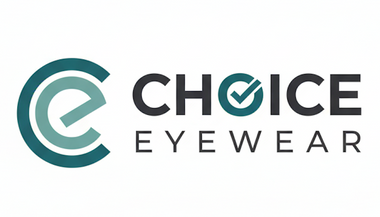Shopping for glasses online can be overwhelming. Beyond your prescription, you're faced with endless styles, materials, and a string of mysterious numbers.
As SF-based eyewear experts with over 20+ years of experience, we're here to make it simple. Finding the perfect pair is a balance of three key factors: Style, Material, and Fit.
Here's our expert guide to choosing with confidence.
Part 1: Finding Your Vibe (Style & Materials)
Before you worry about numbers, let's talk about the look. The frame you choose says a lot about your style.
Frame Types
-
Full Rim: This is the most durable and classic style. The frame fully encases the lens, making it a great, protective choice for stronger prescriptions and everyday wear.
-
Half Rim: A sophisticated, professional look. The frame only supports the top of the lens, creating a lighter feel that draws attention to your eyes.
-
Rimless: The ultimate in minimalism. These are the lightest frames available, offering a "barely-there" appearance. (Note: These must be paired with durable, impact-resistant lenses like Polycarbonate).
Frame Materials
The material affects weight, durability, and style.
-
Acetate: It's a plant-based plastic that's stronger, lighter, and more flexible than standard plastic. It also comes in the richest colors, including all our beautiful Tortoise Shell frames.
-
Metal: Sleek, thin, and classic. A metal frame offers a minimalist, academic, or retro vibe.
-
Titanium: This is our top-recommended material. A premium, hypoallergenic metal. It's incredibly strong, impossibly light, and the perfect choice if you have sensitive skin or want a "barely-there" feel.
-
Plastic: Often the most affordable and lightweight option, perfect for a backup pair.
Part 2: Understanding Your Fit (What Those Numbers Mean)
This is the technical part, but it's simpler than you think. A good fit is the key to all-day comfort.
How to Read Frame Measurements Look on the inside of the temple arm of your current, best-fitting pair. You'll see a set of numbers, like 51-18-140.
-
51 (Lens Width): The horizontal width of one lens.
-
18 (Bridge Width): The distance between the lenses, where the frame rests on your nose. This is key for a good fit!
-
140 (Temple Length): The length of the "arm" from the hinge to the tip.
How to Use This: You don't need to match these numbers exactly, but they give you a great baseline. If your current frames (that you like) are 51-18-140, a new pair that is 50-19-145 will likely fit you just as well.
Our Expert Fit Tip: Do your glasses constantly slide down your nose? You're probably wearing a Bridge Width that's too wide for you. Look for a smaller number (e.g., 16 or 17) or a frame with adjustable nose pads.
Part 3: Your Expert Checklist (Lifestyle & Lenses)
Finally, as a passionate, SF-based small business, we don't just sell glasses—we find solutions. Here's our final check:
-
What's Your Lifestyle? If you're active, choose a durable acetate or flexible titanium frame. If you're on a computer all day, Blue Light lenses are a must.
-
What's Your Prescription? If you have a very strong prescription, a full-rim, acetate frame is a great choice to support the lens.
-
Do You Wear Bifocals or Progressives? This is critical. To ensure your lenses work correctly, you must choose a frame with a Lens Height (vertical height) of at least 29mm.
The Choice Is Clear
Choosing the right frame isn't just about fashion—it's about function, comfort, and confidence.
Remember, every pair you buy from us includes free, high-quality clear single-vision lenses. By understanding your measurements and materials, you can choose a pair you'll truly love to wear every day.


